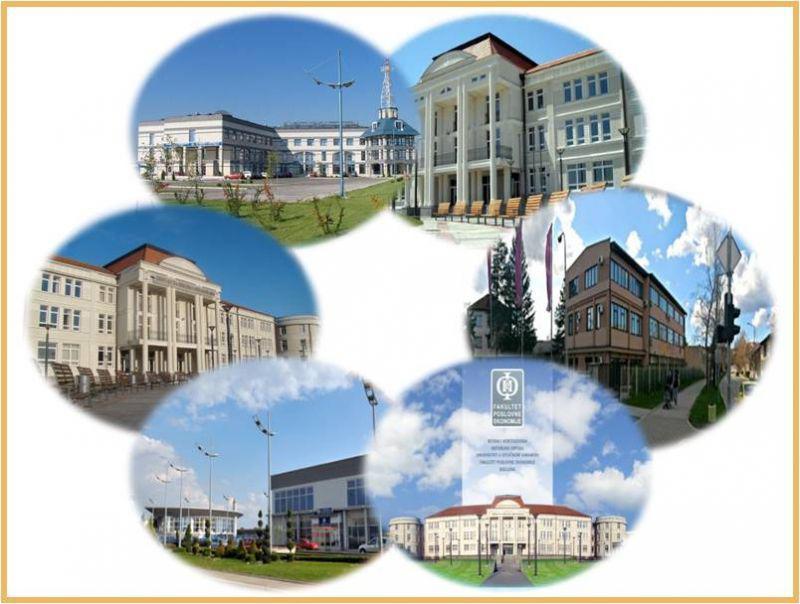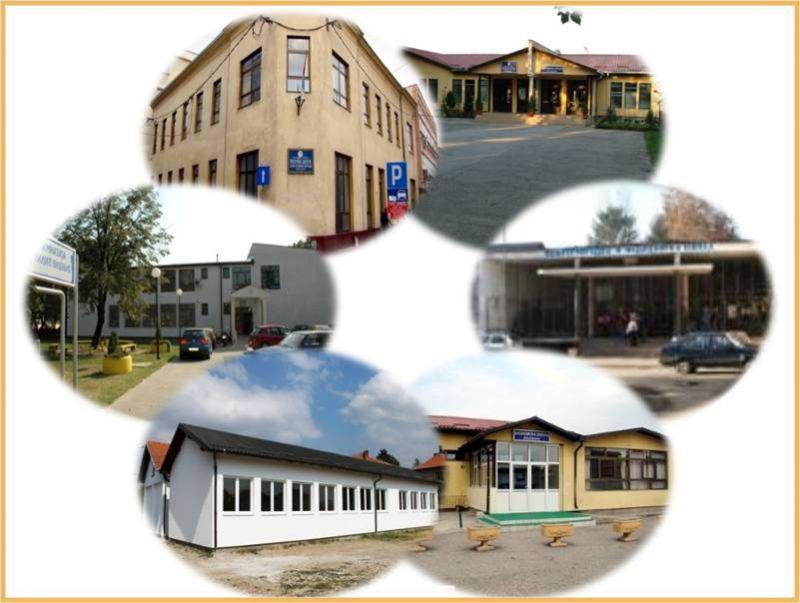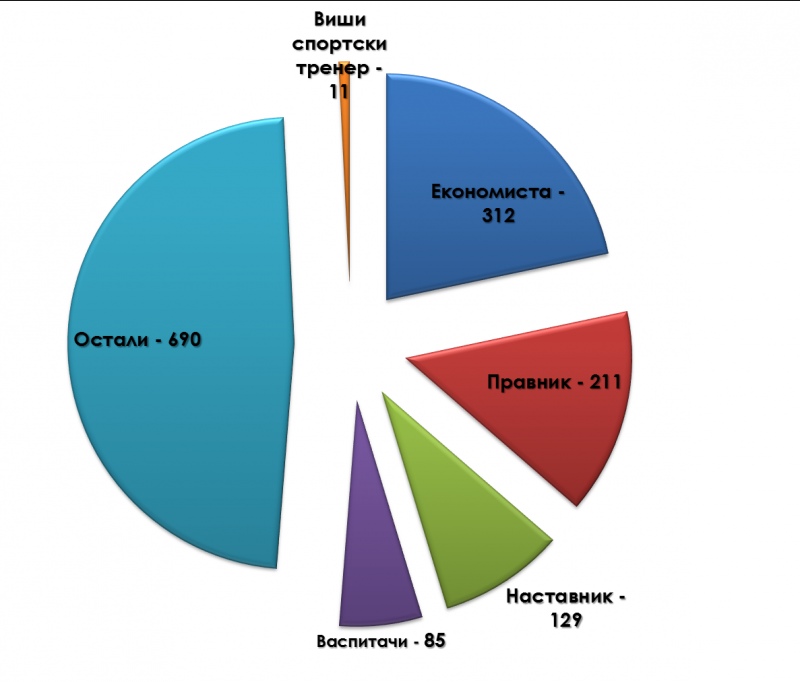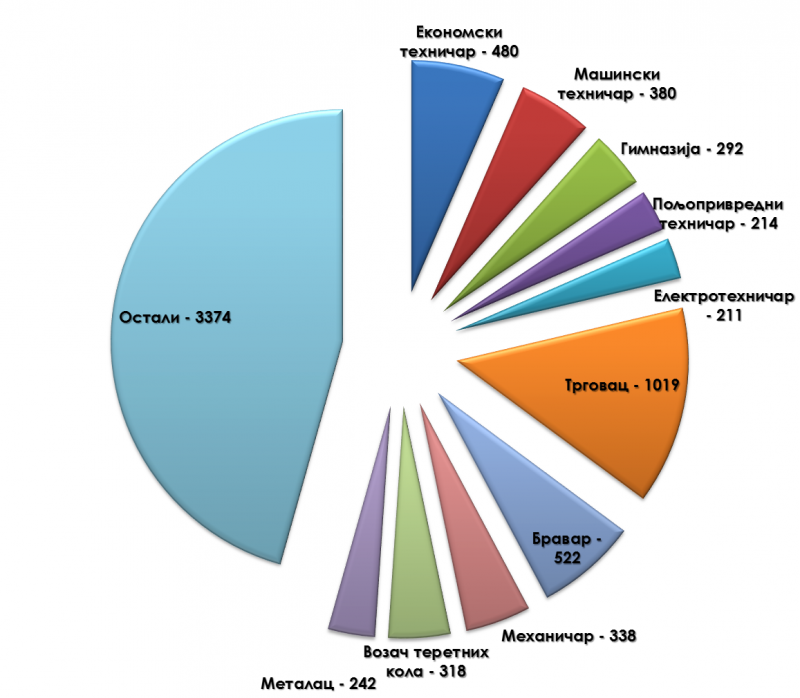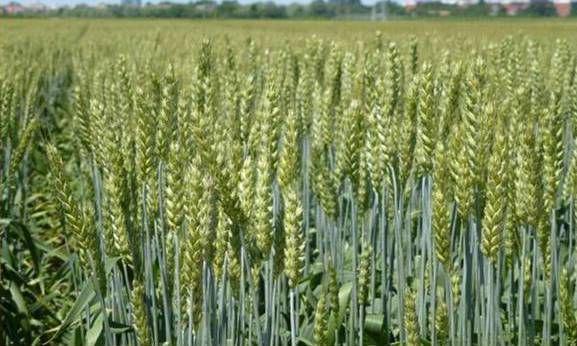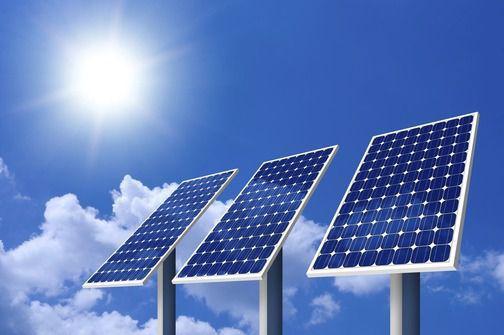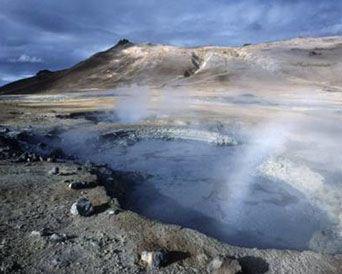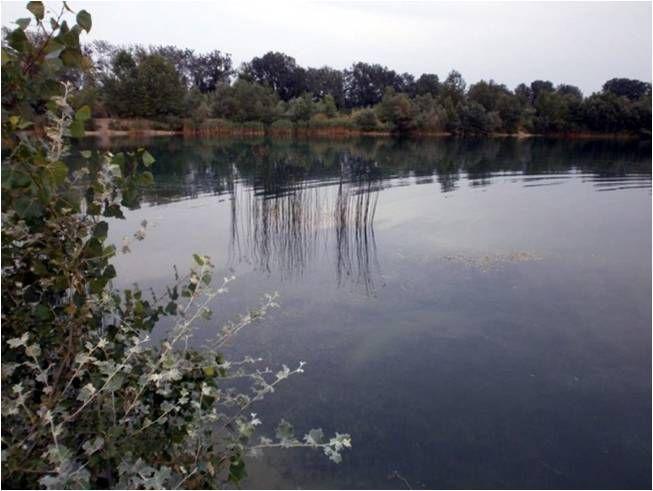Resources
Human resources
There are approx. 115,000 inhabitants in Bijeljina City, out of what 45,000 live at the inner urban area.
Thanks to investment in education, college education primarily, there is a growing number of young population in Semberija, and their educational structure has been constantly improving considering the fact that a large number of young educated experts continue to live in Bijeljina after college graduation. In addition to this, over a thousand inhabitants move to Bijeljina and adjacent settlements every year, which contributes to enlarged availability of labour and creates a larger market for goods and services.
In 2013, average gross salary was 1,307 convertible marks, and net salary was BAM 789. 20,017 inhabitants of the City were employed the same year.
Graphic View of Available Labour
Unskilled workers – 3654; University graduates – 1850; Secondary school – 3634; Skilled workers – 4980. The total of available workforce is 14,118.
Graphic View of Employed Labour by Sectors
Agriculture, Forestry and Fishing - 25%; Process Industry (Metals and Food) – 5%; Other – 70%
Average Gross Salary:
- Skilled workers 1,345 convertible marks (€ 690);
- Unskilled workers 838 convertible marks (€ 430).
Colleges and Secondary Schools
Total number of college/secondary school students:
- Secondary school students 4,131
- College students 5,692
There are 6 secondary schools and 6 colleges with 23 faculties at the area of Bijeljina City.
Review of Education Majors
|
Major |
Number of Students |
|
Agriculture, Food Processing and Medicine |
1059 |
|
Electrical and Mechanical Technician |
1024 |
|
Classic Education, Social and Linguistic Majors, Information Technologies |
913 |
|
Secondary School of Economics |
609 |
|
Land Surveillance and Constructions, Trade and Law |
463 |
|
Faculties |
Number of Students |
|
Economics |
1,520 |
|
Law, Information Technologies, the English Language, Economics, Tax System, Art |
1,450 |
|
Teacher and Preschool Teacher |
1,340 |
|
Pharmacy, Medical Care, Psychology, Agriculture |
402 |
Graphic View of Education Structure (Majors) at Universities
Preschool Teachers – 85; Teacher – 129; Lawyer – 211; Economist – 312; Sports Coaching Graduate – 11; Other – 690
Graphic View of Education Structure (Majors) at Secondary Schools
Economics Technician – 480; Mechanical Technician – 380; Grammar School – 292; Agricultural Technician – 214; Electrical Technician – 211; Sales Assistant – 1019; Locksmith – 522; Machinist – 338; Freight Vehicle Driver – 318; Metalworker – 242; Other – 3374
Agricultural Resources
SOIL
- 53,926 ha of good quality arable land;
- Approx. 5,000 of registered agricultural holdings;
- 300 ha of greenhouse vegetable growth;
- 2,000 ha of soil with irrigation systems.
Solar Energy
Bijeljina climate is moderate-continental, with 1,800 to 1,900 hours of sunlight a year and moderate cloudiness which is most intensive in January, February and November; and least intensive in June, July and September. Summers are warm, while the winters are mostly moderately cold. Autumn and spring temperatures are identical. Summer absolute temperature can rise up to 40°C, and winter absolute minimum temperature can fall down to -35°С. Average duration of freezing air is 163 days, from October to April. Most of the rainfall occurs in May and June, with the least of it in March and September, thus average annual rainfall within the period 1981–2012 was 785 l/m². Average number of days with snowfall is 40 a year. Average temperature in July is 22°С, in January it is -1°С, with average annual temperature being 11.7°С. Relative air humidity is 70-80%. Winds are rare and rather weak, mostly blowing from north and northwest directions, when there are any.
Average sunlight in Balkan countries is about 40% more intensive than the European average. Since this potential is mainly untapped, there are great possibilities to invest in this field in Bijeljina City.
Feasibility study on potentials to use solar energy for heating and electrical power at the areas of Bijeljina City and Bogatić Municipality is at the following link:
http://www.investinbijeljina.org/download/studija_izvodljivosti_o_mogu%C4%87nostima_kori%C5%A1%C4%87enja_solarne_energije_za_dobijanje__toplotne_i_elektri%C4%8Dne_energije_na_podru%C4%8Dju_grada_bijeljina_i_op%C5%A1t.pdf
Geothermal Energy
Geothermal researches intended for the purpose have not been done at Bijeljina City area so far. Therefore, the data on geothermal characteristics of this area were obtained based on an analysis and reinterpretation of other relevant geology research results, as well as based on an analysis of earth crust structure, thickness and development in this part and neighbouring parts of former Yugoslavia.
Main indicators of geothermal properties of any terrain depend on the following factors: crust thickness and structure, thickness of the lithosphere, time elapsed after tectonic activities, magmatic process period and type, content of radiogenic elements in rocks, neo-tectonic movements, seismicity, hydro-geological properties of soil, etc. All of these factors exist at the area of Semberija as well, thus they make certain extent of impact on some geothermal characteristics i.e. parameters.
The Value of the heat flow in Semberija ranges within 90-110 W/m². These values are about 50-80% larger than the average value of terrestrial heat flow rate in continental part of Europe, which is approx. 60 W/m².
Groundwater Available for Drinking
Resources of potable groundwater within the area of Bijeljina City are aquifer waters present in alluvial, i.e. Quaternary sediments of Drina and Sava rivers and aquifers in Plio-Quaternary sediments. Due to more extensive exploration and significance of Drina and Sava alluvial sediments for water supply, they have been subject to researches most of all.
At the City area, there are two major aquifers: the first is present in gravel-sandy collectors, and the second one in sandy collectors of Quaternary and Plio-Pleistocene origin.
Waters of these two aquifers are used for water supply system. The phreatic aquifer is most exploited one, thus Bijeljina and central part of Semberija are supplied out of it, with a plan to supply Ugljevik as well.


